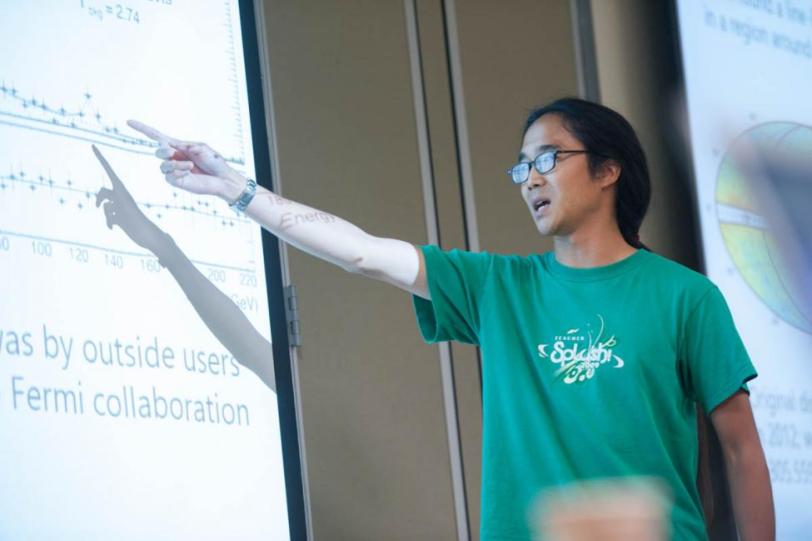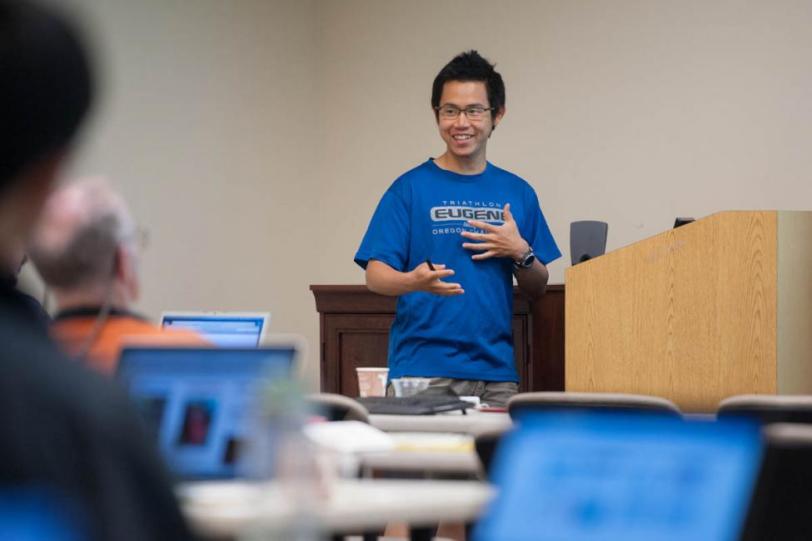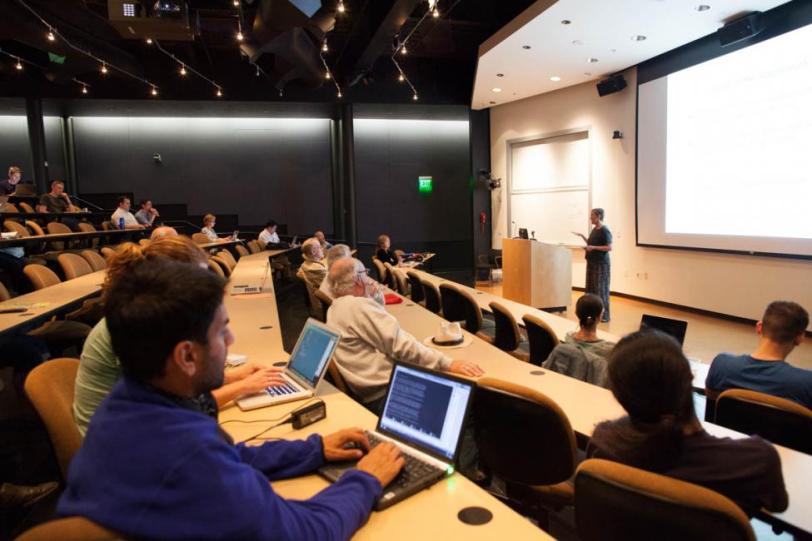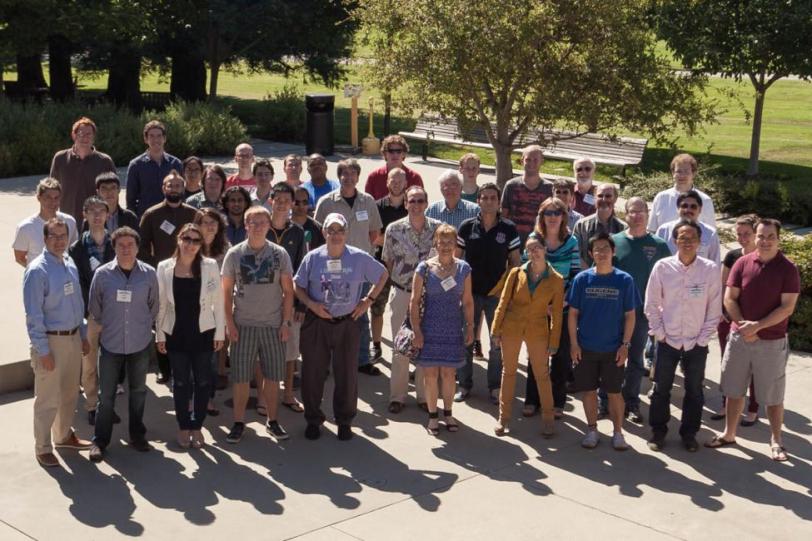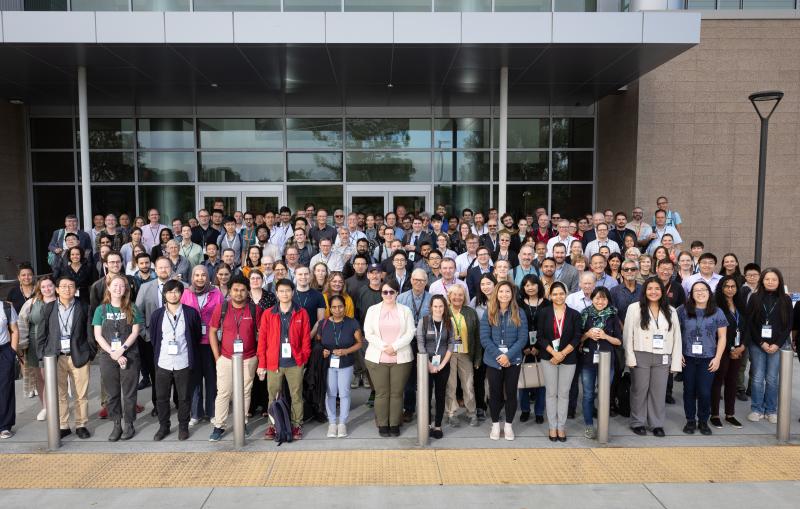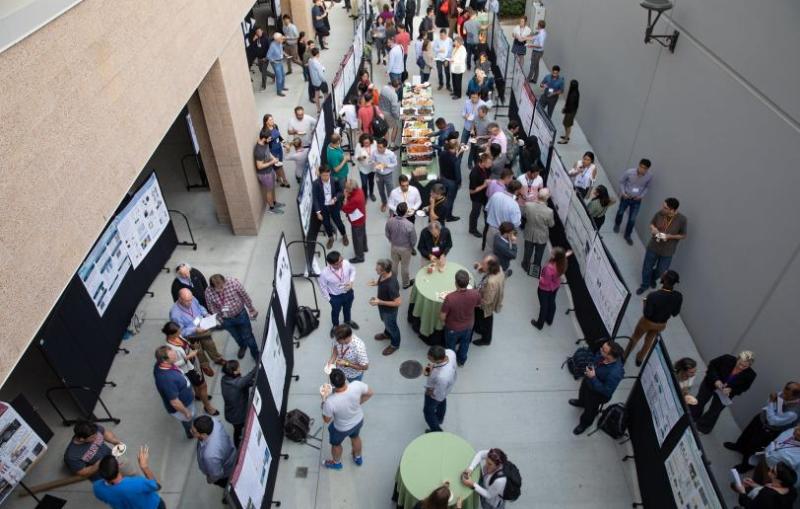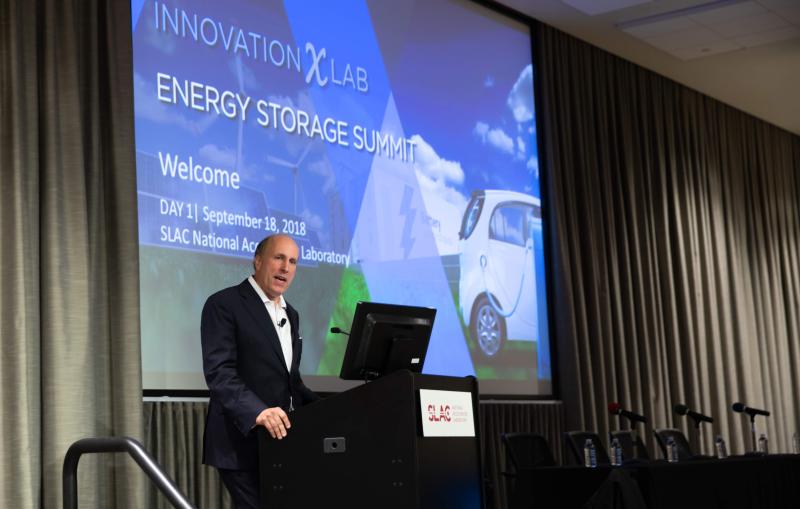SLAC Summer Institute Featured Collaborative Mini-projects
For the 41st annual Particle Physics & Astrophysics Department’s SLAC Summer Institute (SSI), organizers introduced a successful new feature.
By Mike Ross
For the 41st annual Particle Physics & Astrophysics Department’s SLAC Summer Institute (SSI), organizers introduced a successful new feature.
In addition to hearing the traditional program of high-level physics lectures and enjoying the social events, the particle physics graduate students formed teams to work on one of four mini-projects during the two-week institute held July 8–19. They reported their findings on the penultimate day.
Co-chair JoAnne Hewett said that after last year’s grand 40th anniversary event, she and her colleagues wanted to do something innovative this summer. The projects motif fit well with this year’s theme – Journey Through the Frontier: Planning for Future Facilities – which was chosen to complement the Snowmass Process, an occasional particle physics community-wide planning study that is being held this year for the first time in a more than a decade and culminates this week in a series of meetings in Minneapolis called "Snowmass on the Mississippi."
The lectures covered the "big questions" the community faces in its three major domains – the Energy, Cosmic and Intensity Frontiers, with the latter encompassing Flavor and Neutrino Physics – as well as recent results from major experiments. The project topics proposed for each domain presented a specific scenario and asked each group to plan a course of action.
"We wanted to give young people a forum to look into the future through the connection to Snowmass," said Su Dong, another co-chair. "We didn’t want topics to be too broad, since the students have less than two weeks to work on them, or too mainstream, so that they can have some fun off the road. We also didn’t put a senior person in each group, because we wanted the fresh, less-biased views of what they would do differently."
That was certainly the case with the project group that graduate students Josh Cogan (Stanford/SLAC), Marcus Niechciol (University of Siegen), Sho Uemura (Stanford/SLAC) and Chaowaroj Wanotayaroj (University of Oregon), formed to answer a question about dark matter.
"None of us had any experience in this area," said Sho Uemura, a third-year graduate student working on hardware and software engineering for the Heavy Photon Search experiment. "It was interesting to look at the science behind an experiment. Everything in our presentation was something we learned while doing the project. That's optimal for learning."
"I was quite impressed with what this team did," Su Dong said. "They picked a topic unrelated to their regular activities and put in some real work. They not only looked up existing information online and talked to many people, they actually ran Monte Carlo generators and did calculations to clarify quantitatively some aspects that were not commonly known before."
In addition to stimulating engaging discussions and innovative technical results, Hewett said the projects appear to have a career development benefit as well. "The students formed solid friendships within the project groups," she said. "This is very important because they will be peers for their entire careers."
This year's institute was also the 10th anniversary of the contest question, a forward-looking question to which participants are invited to submit answers. A winner is chosen by an informal group of the institute’s co-chairs and speakers.
This year's question was, "What exciting physics do you want to be lecturing about at the 2023 SLAC Summer Institute?" The winning answer – "Neutrinos: The Precision Frontier" – was submitted by David Caratelli, a Columbia University graduate student who works on FermiLab's MicroBooNE neutrino experiment.
"The summer institute was a good experience," Caratelli said. "Its broad range of subjects allowed me to learn about topics I am less familiar with. Hearing about the many experiments being proposed for the future was a great way to learn about the routes that physics will be taking in the coming decades."
Contact
For questions or comments, contact the SLAC Office of Communications at communications@slac.stanford.edu.
